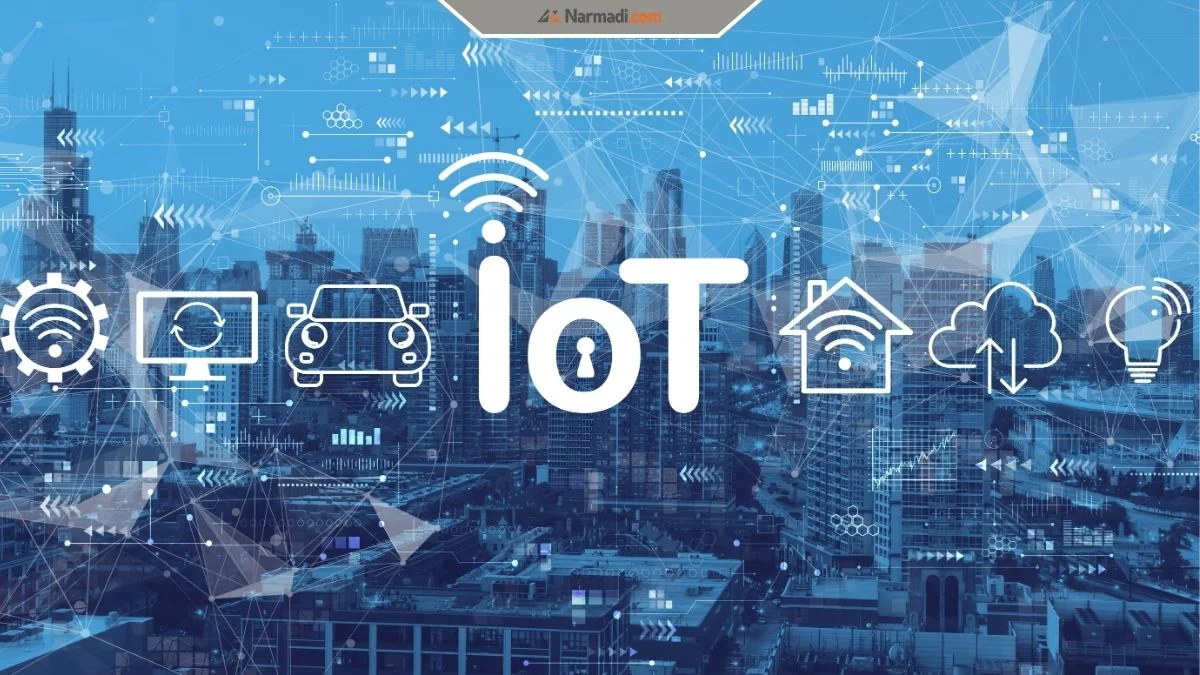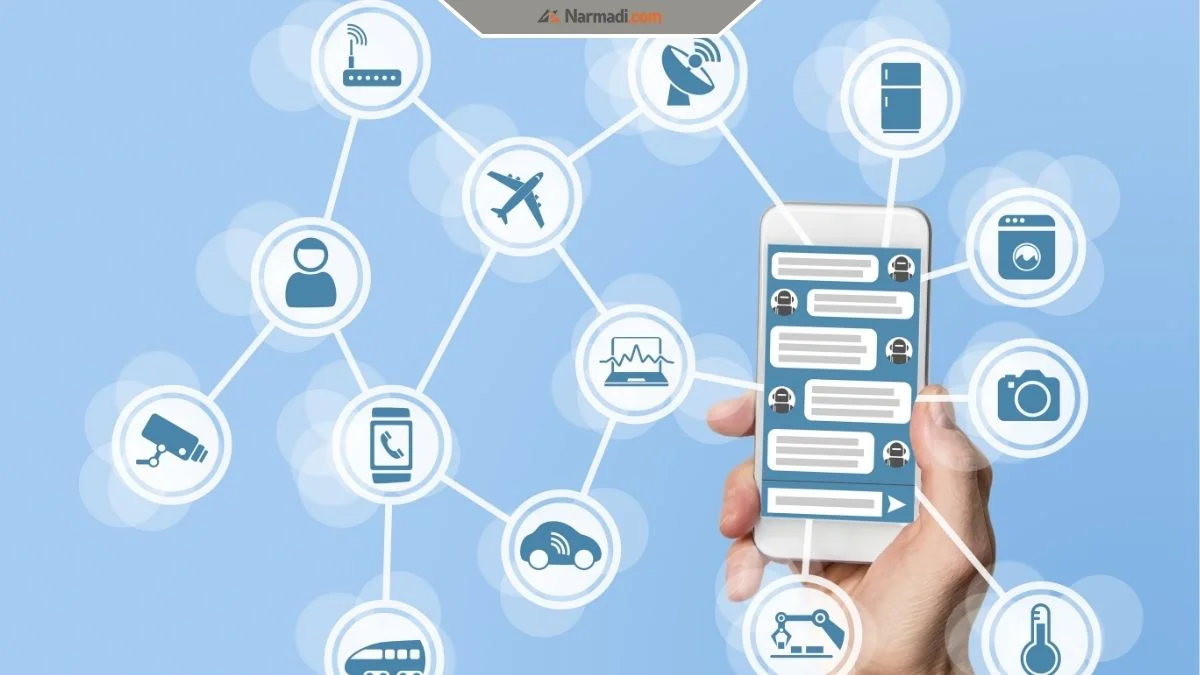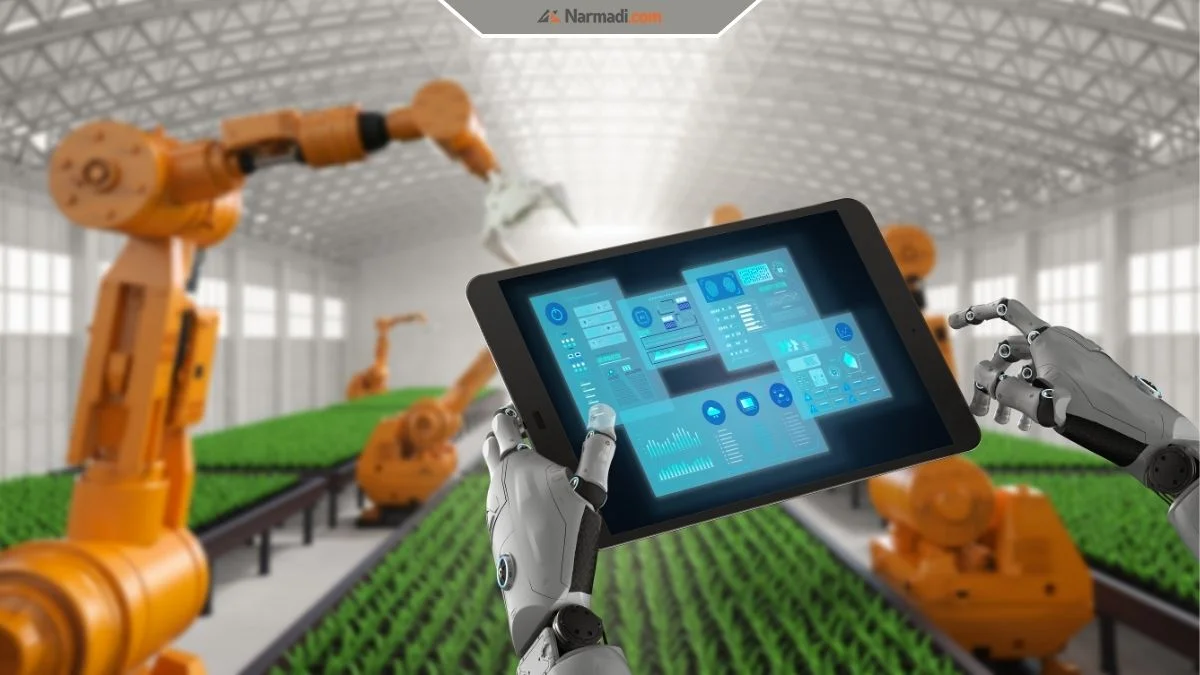IoT in the workplace is slowly changing the way companies operate, improving performance and enabling innovation.
This article will dive you into how IoT can be advantageous, harmful or transformative in the workplace
Table of Contents
IoT in the Workplace: What is That?

To put it simply, IoT is a network of physical objects that are equipped with sensors, software and connectivity to harvest, share and execute data.
Also Read
In workplaces, connectivity allows devices, workers and systems to talk to each other more effectively to make better decisions and act based on data which in turn will give a more efficient performance.
Applications of IoT in the Workplace
- Smart Offices: The IoT is able to turn offices into smart offices by, for example, implementing lighting and temperature control automation. This not only gives unmatched convenience but also prevents energy waste. You need to read about IoT works for more insight.
- Employee Health Monitoring: By using wearable IoT devices, tracking employee health is no longer a hard task to do which in turn promotes employee’s safety and well-being.
- Inventory Management: RFID tags and smart shelves can help warehouses and retail for inventory tracking and management.
- Predictive Maintenance: IoT sensors are able to monitor the performance of certain equipment to predict and prevent failures.
The Impact of IoT in the Workplace

1. Enhanced Productivity
According to a study by Aruba, 46% of businesses that integrate IoT to their systems reported significant productivity gains.
IoT devices are also able to streamline tasks and automate repetitive processes which in turn allow employees to focus on higher-value activities.
And in addition to that, smart collaboration tools that use IoT are also able to improve remote work capabilities.
2. Improve Employee Engagement and Well-Being
IoT powered tools provide employees with flexibility and a personalized work environment.
A report provided by PwC stated that 57% of employees believe that IoT promotes work-life balance by enabling remote and hybrid working options.
And in addition to that, smart wearables are able to enhance workplace safety by monitoring environmental conditions and health in real-time.
3. Cost Saving
By optimizing resources, IoT is able to lower operational costs. For example, smart HVAC and lighting systems enable energy consumption reduction by up to 20% in offices.
Other than that, predictive maintenance also reduces unplanned machinery downtime which in turn saves businesses billions annually.
4. Enhanced Security
By employing smart surveillance and access control systems, IoT can also enhance security in offices and warehouses.
Smart security cameras that are connected to IoT networks enable real-time monitoring and alerts to offices and warehouses, thus reducing theft and vandalism.
It’s not going to stop there, biometric access systems also offer great security for sensitive areas within the workplace.
Challenges of IoT in the Workplace

While offering myriads of benefits, IoT in the workplace is not without any difficulties. There are some challenges that business must address to fully realise IoT’s potential.
1. Security Risks
The interconnected devices nature of IoT can pose security issues and increase vulnerability to cyber attacks.
A report issued by Kaspersky, one of the giants in cyber security industries, stated that 43% of companies face IoT-related security breaches annually.
With that being said, to overcome this challenge companies must implement a robust encryption and secure firmware updates.
2. Complexities
Another thing to consider is the nature of IoT that in fact didn’t have a standard set of connectivity for each device.
This can pose compatibility issues among the diverse IoT devices that can be daunting for companies.
Future of IoT in the Workplace

While there are benefits and challenges with implementing IoT in the workplace, the future of it actually looks promising.
Driven by the advancement in AI, machine learning, and 5G connectivity, here’s what to expect for IoT in the workplace:
- AI-driven IoT: The usage of AI will enable more intelligent IoT systems that are able to analyze data in real-time more quickly and also automate decision-making processes.
- Edge Computing: IoT devices will increasingly rely on edge computing, which is processing data closer to its location, rather than taking in all of that data to a centralized cloud server. This in turn will reduce latency and enhance performance.
- Smart City and Connected Ecosystem: By integrating workplaces with smart city infrastructures, IoT is able to enhance employee mobility and improve resource efficiency.
There you have it! Everything you need to know about IoT in the workplace, from its benefits, challenges and what the future might hold.











